Unresolved questions about the nature of supermassive black holes, gravitational monsters at the heart of nearly all large galaxies, were at the forefront of a recent conference at the Kavli Institute for Theoretical Physics (KITP) at the University of California, Santa Barbara.
Sep 10th, 2013
Read more
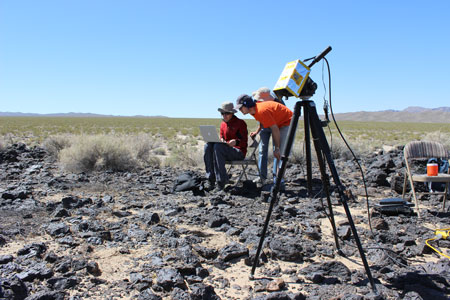 Mars rovers, such as Curiosity, currently can't make science decisions on their own. That has to change if future rover missions are to make discoveries further out in the solar system, scientists say. To help future rover missions spend less time waiting for instructions from Earth, scientists at the Jet Propulsion Laboratory in Pasadena, Calif., developed an advanced two-lens camera, called TextureCam, that can think about the pictures it snaps and make science-based decisions.
Mars rovers, such as Curiosity, currently can't make science decisions on their own. That has to change if future rover missions are to make discoveries further out in the solar system, scientists say. To help future rover missions spend less time waiting for instructions from Earth, scientists at the Jet Propulsion Laboratory in Pasadena, Calif., developed an advanced two-lens camera, called TextureCam, that can think about the pictures it snaps and make science-based decisions.
Sep 9th, 2013
Read more
Heidelberg scientists develop theoretical model to interpret data from the Planck satellite.
Sep 9th, 2013
Read more
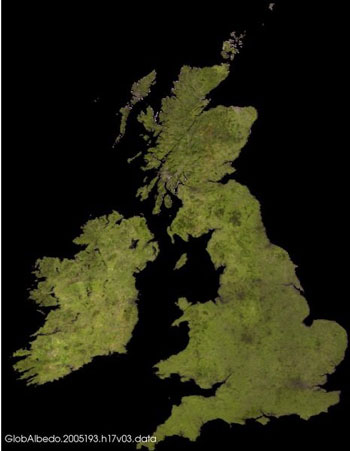 The amount of sunlight being absorbed or reflected by Earth is one of the driving forces for weather and climate. Satellites are providing this information with unprecedented accuracy.
The amount of sunlight being absorbed or reflected by Earth is one of the driving forces for weather and climate. Satellites are providing this information with unprecedented accuracy.
Sep 6th, 2013
Read more
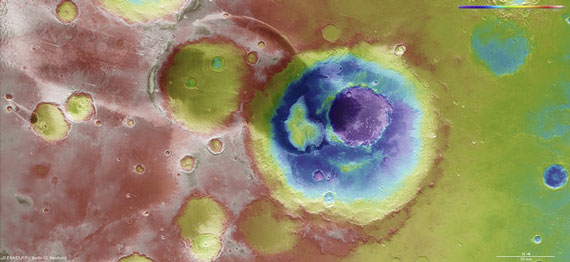 Exceptional structures deposited and shaped by water and winds adorn these interlocking craters and sculpt radiating patterns in the sands of Mars.
Exceptional structures deposited and shaped by water and winds adorn these interlocking craters and sculpt radiating patterns in the sands of Mars.
Sep 6th, 2013
Read more
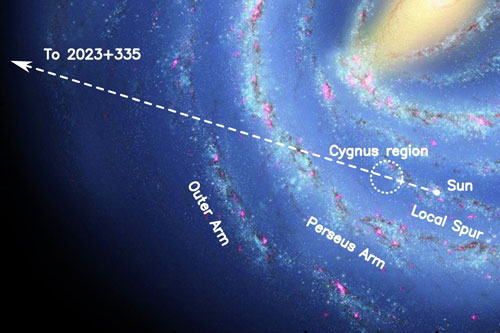 Astronomers discover how the image of a distant quasar splits into multiple images by the effects of a cloud of ionized gas in our own Milky Way Galaxy. Such events were predicted as early as in the 1970s, but the first evidence for one now has come from observations performed with the telescope array VLBA and analysed in the Max Planck Institute for Radio Astronomy.
Astronomers discover how the image of a distant quasar splits into multiple images by the effects of a cloud of ionized gas in our own Milky Way Galaxy. Such events were predicted as early as in the 1970s, but the first evidence for one now has come from observations performed with the telescope array VLBA and analysed in the Max Planck Institute for Radio Astronomy.
Sep 6th, 2013
Read more
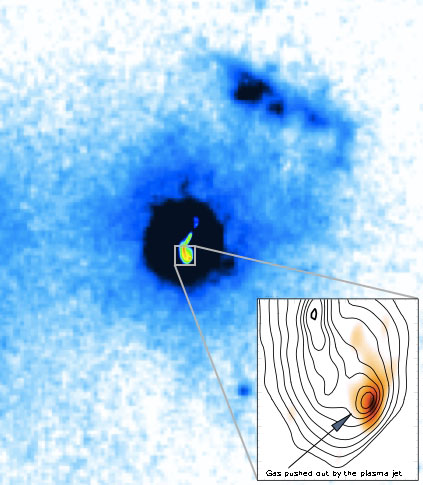 Astronomers using a worldwide network of radio telescopes have found strong evidence that a powerful jet of material propelled to nearly light speed by a galaxy's central black hole is blowing massive amounts of gas out of the galaxy. This process, they said, is limiting the growth of the black hole and the rate of star formation in the galaxy, and thus is a key to understanding how galaxies develop.
Astronomers using a worldwide network of radio telescopes have found strong evidence that a powerful jet of material propelled to nearly light speed by a galaxy's central black hole is blowing massive amounts of gas out of the galaxy. This process, they said, is limiting the growth of the black hole and the rate of star formation in the galaxy, and thus is a key to understanding how galaxies develop.
Sep 5th, 2013
Read more
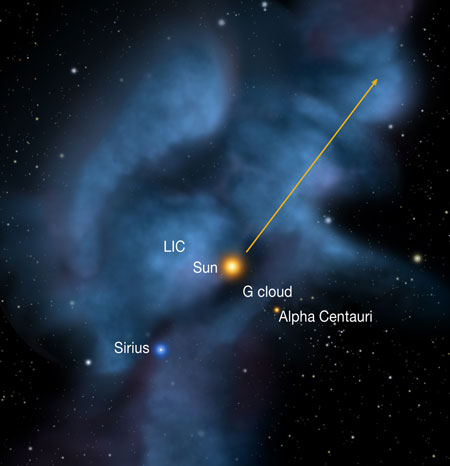 Scientists, including University of New Hampshire astrophysicists involved in NASA's Interstellar Boundary Explorer mission, have discovered that the particles streaming into the solar system from interstellar space have likely changed direction over the last 40 years.
Scientists, including University of New Hampshire astrophysicists involved in NASA's Interstellar Boundary Explorer mission, have discovered that the particles streaming into the solar system from interstellar space have likely changed direction over the last 40 years.
Sep 5th, 2013
Read more
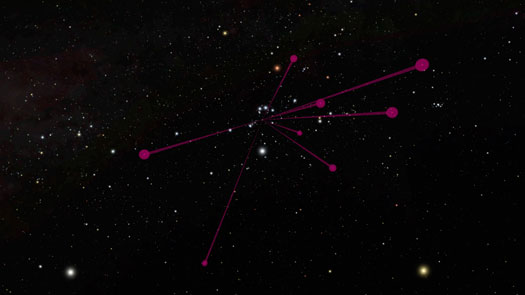 Astronomers are constantly on the hunt for ever-colder star-like bodies, and two years ago a new class of such objects was discovered. However, until now no one has known exactly how cool their surfaces really are -- some evidence suggested they could be room temperature. A new study shows that while these brown dwarfs, sometimes called failed stars, are warmer than previously thought with temperatures about 250-350 degrees Fahrenheit.
Astronomers are constantly on the hunt for ever-colder star-like bodies, and two years ago a new class of such objects was discovered. However, until now no one has known exactly how cool their surfaces really are -- some evidence suggested they could be room temperature. A new study shows that while these brown dwarfs, sometimes called failed stars, are warmer than previously thought with temperatures about 250-350 degrees Fahrenheit.
Sep 5th, 2013
Read more
Simulations predict safest path for rovers to travel.
Sep 5th, 2013
Read more
 How many different molecules can be created when you release one of the universe's most reactive substances, hydrogen cyanide, in the lab? And will the process create some particularly interesting molecules?
How many different molecules can be created when you release one of the universe's most reactive substances, hydrogen cyanide, in the lab? And will the process create some particularly interesting molecules?
Sep 5th, 2013
Read more
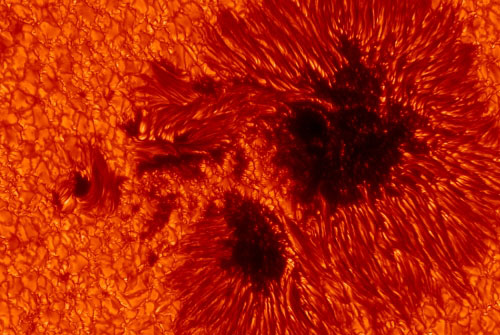 In 2012, Astronomy and Astrophysics published a statistical study of the isotopic records of solar activity, in which Abreu et al. claimed that there is evidence of planetary influence on solar activity. A+A is publishing a new analysis of these isotopic data by Cameron and Schuessler. It corrects technical errors in the statistical tests performed by Abreu et al. They find no evidence of any planetary effect on solar activity.
In 2012, Astronomy and Astrophysics published a statistical study of the isotopic records of solar activity, in which Abreu et al. claimed that there is evidence of planetary influence on solar activity. A+A is publishing a new analysis of these isotopic data by Cameron and Schuessler. It corrects technical errors in the statistical tests performed by Abreu et al. They find no evidence of any planetary effect on solar activity.
Sep 5th, 2013
Read more
Multiple 'secret weapons' will be used on China's Chang'e-3 lunar probe, scheduled to launch at the end of this year for a moon landing mission, a key scientist said on Wednesday.
Sep 5th, 2013
Read more
No one knows for sure, but it is not unlikely that the universe is constructed in a completely different way than the usual theories and models of today predict. The most widely used model today cannot explain everything in the universe, and therefore there is a need to explore the parts of nature which the model cannot explain. This research field is called new physics, and it turns our understanding of the universe upside down. New research now makes the search for new physics easier.
Sep 4th, 2013
Read more
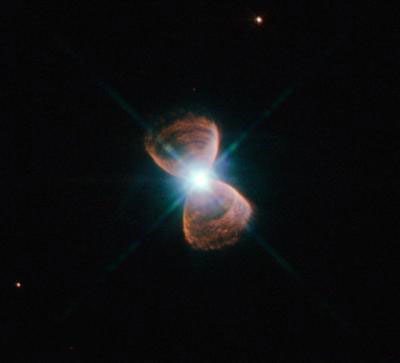 Astronomers have used the NASA/ESA Hubble Space Telescope and ESO's New Technology Telescope to explore more than 100 planetary nebulae in the central bulge of our galaxy. They have found that butterfly-shaped members of this cosmic family tend to be mysteriously aligned -- a surprising result given their different histories and varied properties.
Astronomers have used the NASA/ESA Hubble Space Telescope and ESO's New Technology Telescope to explore more than 100 planetary nebulae in the central bulge of our galaxy. They have found that butterfly-shaped members of this cosmic family tend to be mysteriously aligned -- a surprising result given their different histories and varied properties.
Sep 4th, 2013
Read more
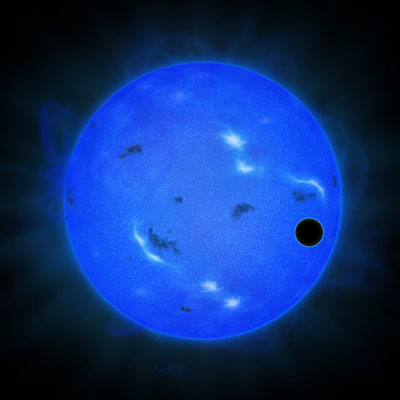 A Japanese research team of astronomers and planetary scientists has used Subaru Telescope's two optical cameras, Suprime-Cam and the Faint Object Camera and Spectrograph (FOCAS), with a blue transmission filter to observe planetary transits of super-Earth GJ 1214 b.
A Japanese research team of astronomers and planetary scientists has used Subaru Telescope's two optical cameras, Suprime-Cam and the Faint Object Camera and Spectrograph (FOCAS), with a blue transmission filter to observe planetary transits of super-Earth GJ 1214 b.
Sep 4th, 2013
Read more
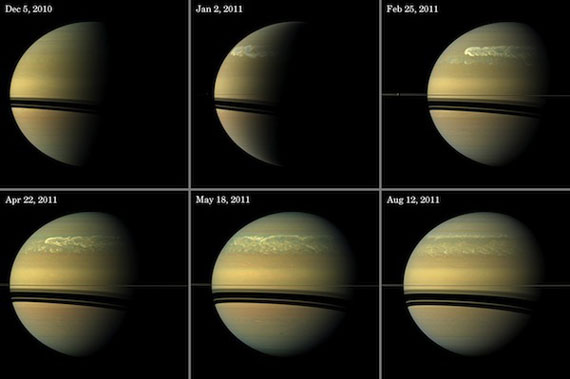 Once every 30 years or so, or roughly one Saturnian year, a monster storm rips across the northern hemisphere of the ringed planet. In 2010, the most recent and only the sixth giant storm on Saturn observed by humans began stirring. It quickly grew to superstorm proportions, reaching 15,000 kilometers (more than 9,300 miles) in width and visible to amateur astronomers on Earth as a great white spot dancing across the surface of the planet.
Once every 30 years or so, or roughly one Saturnian year, a monster storm rips across the northern hemisphere of the ringed planet. In 2010, the most recent and only the sixth giant storm on Saturn observed by humans began stirring. It quickly grew to superstorm proportions, reaching 15,000 kilometers (more than 9,300 miles) in width and visible to amateur astronomers on Earth as a great white spot dancing across the surface of the planet.
Sep 3rd, 2013
Read more
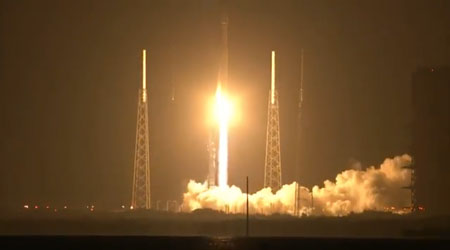 One year after their launch from Cape Canaveral Air Force Station on Aug. 30, 2012, NASA's twin Van Allen Probes have already fundamentally changed how we understand the Van Allen radiation belts above our planet.
One year after their launch from Cape Canaveral Air Force Station on Aug. 30, 2012, NASA's twin Van Allen Probes have already fundamentally changed how we understand the Van Allen radiation belts above our planet.
Sep 3rd, 2013
Read more

 Subscribe to our Space Exploration News feed
Subscribe to our Space Exploration News feed











